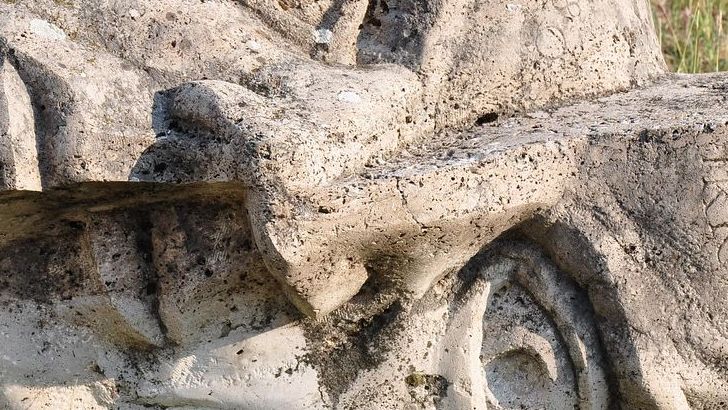Uncovering the Past: The Latest Breakthrough

Archaeologists have long been fascinated by the origins of the first Americans, with theories evolving over time. Recently, a groundbreaking discovery has added a new layer to our understanding of these early inhabitants. Located in an unexpected site in a remote area, the discovery challenges previous assumptions about when and how the first Americans arrived. This finding is not just a minor tweak in history; it is a monumental shift that could reshape textbooks and spark debates. The discovery, a set of ancient footprints preserved in rock, suggests a timeline much older than previously thought. This revelation is akin to finding a missing piece in a puzzle, offering a clearer picture of early human migration.
The Significance of Ancient Footprints

Footprints are more than mere impressions in the soil; they are snapshots of a moment in time. The recently uncovered footprints date back over 23,000 years, predating previous estimates by thousands of years. These prints were found in what is now New Mexico, preserved in a dried-up lake bed. The significance of this find cannot be overstated, as it suggests that humans were present in North America during the last Ice Age. This discovery challenges the long-held belief that the first Americans arrived around 13,000 years ago via a land bridge from Asia.
Revisiting the Land Bridge Theory

For decades, the prevailing theory was that the first Americans crossed a land bridge known as Beringia from Siberia to Alaska. This land bridge, exposed during periods of low sea levels, was thought to be the gateway for human migration. However, the newfound footprints suggest that humans were already present in North America long before this land bridge was accessible. This raises intriguing questions about alternative migration routes. Could ancient peoples have traveled by sea or along coastal routes? This discovery is prompting scientists to look beyond traditional theories and consider new possibilities.
Debating the Migration Routes

The discovery of the ancient footprints has ignited debates among archaeologists and historians. Some experts argue that the footprints support the coastal migration theory, where early humans traveled along the Pacific coastline by boat. Others propose that there may have been multiple migration waves, each taking different routes. The debate continues, but the consensus is clear: our understanding of early human migration is far from complete. This discovery is a reminder that history is not static, and each new find has the potential to rewrite what we know.
Implications for Modern Understanding

The implications of this discovery are profound, not just for historians but for our understanding of human evolution and adaptation. It suggests that early humans were more resourceful and adaptable than previously thought, capable of surviving in harsh environments. This adaptability is a testament to the resilience of our ancestors, who navigated through ice-covered landscapes and unpredictable climates. The discovery also highlights the importance of preserving archaeological sites, as they hold the keys to unlocking our past.
Technological Advances in Archaeology

The discovery of these ancient footprints was made possible by advances in technology, particularly in dating techniques. Radiocarbon dating, combined with stratigraphy, allowed researchers to accurately determine the age of the footprints. These technologies are crucial in piecing together the timeline of human history. The use of ground-penetrating radar and other remote sensing tools has also enhanced the ability to locate and study archaeological sites. As technology continues to advance, we can expect more discoveries that will further illuminate our understanding of early human history.
The Role of Indigenous Knowledge

The discovery also underscores the importance of incorporating indigenous knowledge in archaeological research. Indigenous communities have long held oral histories and traditions that provide valuable insights into ancient migrations. Collaborating with these communities can offer new perspectives and lead to more holistic interpretations of archaeological findings. The footprints discovery serves as a reminder of the rich cultural heritage and wisdom that indigenous peoples possess, which can complement scientific research.
Challenges in Archaeological Research

Despite the excitement surrounding the discovery, archaeological research is not without its challenges. Excavations are often time-consuming and require meticulous attention to detail. Funding and access to sites can also be limiting factors. Additionally, interpreting findings is complex, as researchers must piece together fragments of evidence to form coherent narratives. The discovery of the ancient footprints is a testament to the perseverance and dedication of archaeologists who continue to unravel the mysteries of our past.
Public Interest and Education

The discovery has captured public interest, sparking curiosity about our ancient past. It serves as an educational opportunity to engage people with history and archaeology. Museums and educational institutions are using this discovery to create exhibits and programs that bring history to life. By making these findings accessible to the public, there is hope to inspire future generations to explore the field of archaeology and contribute to our understanding of human history.
The Ever-Evolving Story of Human Migration

The discovery of ancient footprints in New Mexico is a reminder that the story of human migration is ever-evolving. Each new find adds a piece to the puzzle, challenging us to rethink what we know and explore new avenues of research. As we continue to uncover the secrets of our past, we gain a deeper appreciation for the journeys and struggles of our ancestors. This discovery is not the end but a new beginning in our quest to understand the origins of the first Americans.








